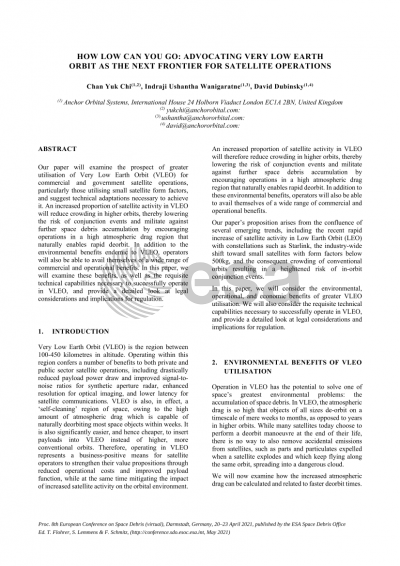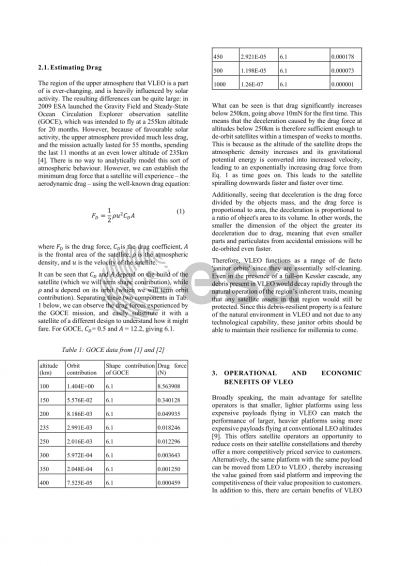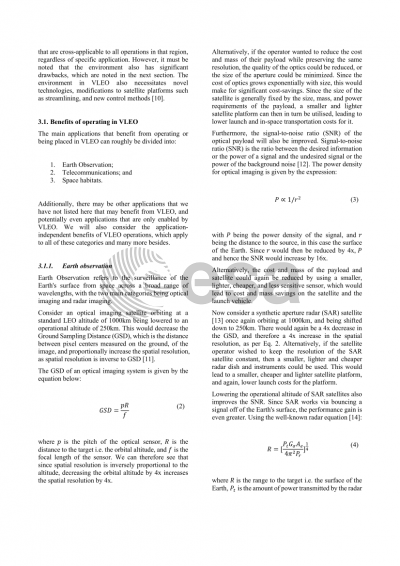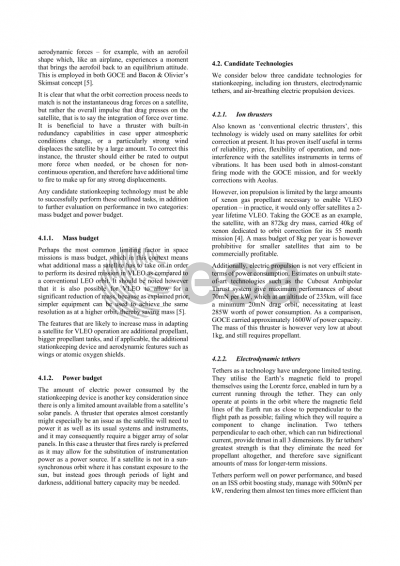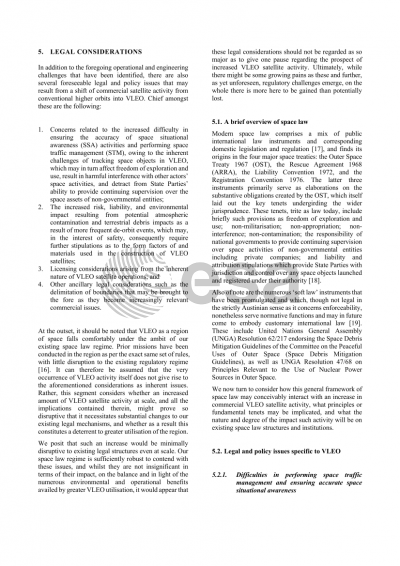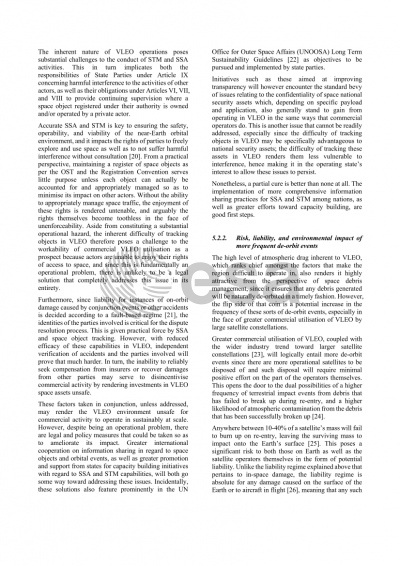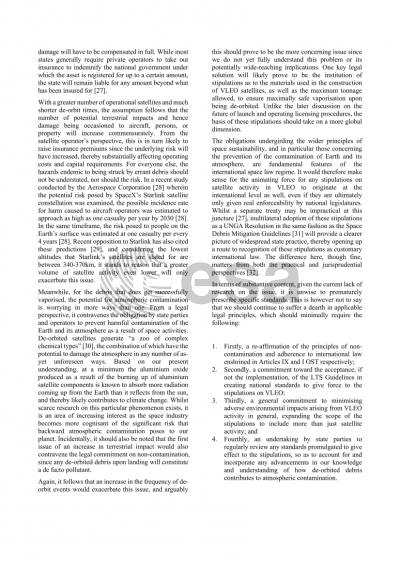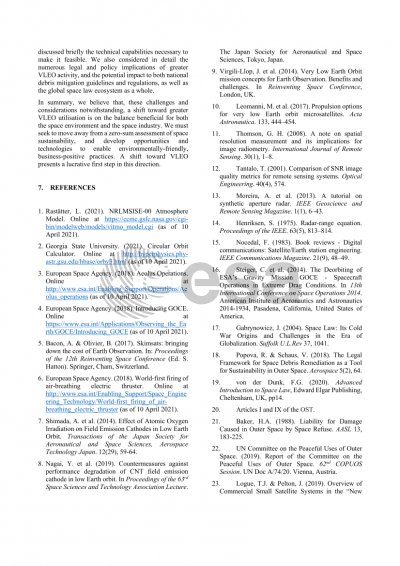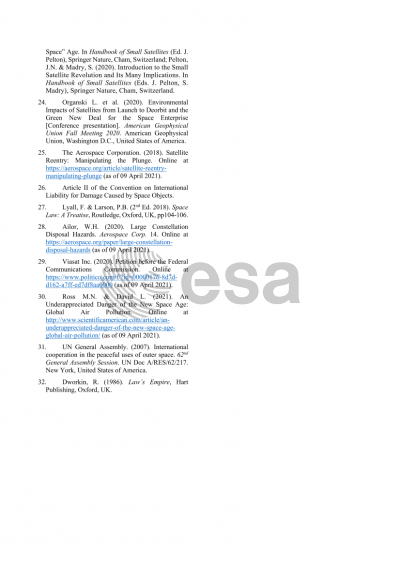Document details

Abstract
Our paper will advocate for the greater utilisation of Very Low Earth Orbit (VLEO) for commercial and government satellite operations, particularly those utilising small satellite form factors, and suggest technical adaptations necessary to achieve it. An increased proportion of satellite activity in VLEO will reduce crowding in higher orbits, thereby lowering the risk of conjunction events and militate against further space debris accumulation by encouraging operations in a high atmospheric drag region that naturally enables rapid deorbit. In addition to these environmental benefits, operators will also be able to avail themselves of a wide range of commercial and operational benefits.
In brief, we will consider the:
1. Environmental benefits of greater VLEO utilisation using orbital simulations;
2. Operational and economic benefits from operating in VLEO;
3. Requisite technical capabilities necessary to successfully operate in VLEO;
4. Legal considerations and implications for regulation.
VLEO is the region between 100-500 kilometres in altitude. Operating within this region confers a number of benefits to both private and public sector satellite operations, including drastically reduced payload power draw and improved signal-to-noise ratios for synthetic aperture radar, enhanced resolution for optical imaging, and lower latency for satellite communications. VLEO is also, in effect, a ‘self-cleaning’ region of space, owing to the high amount of atmospheric drag which is capable of naturally deorbiting most space objects within weeks. It is also significantly easier, and hence cheaper, to insert payloads into VLEO instead of higher, more conventional orbits. Therefore, operating in VLEO represents a business-positive means for satellite operators to strengthen their value propositions through reduced operational costs and improved payload function, while at the same time mitigating the impact of increased satellite activity on the orbital environment.
Our paper’s proposition arises from the confluence of several emerging trends, including the recent rapid increase of satellite activity in LEO with constellations such as Starlink, the industry-wide shift toward small satellites with form factors below 500kg, and the consequent crowding of conventional orbits resulting in a heightened risk of in-orbit conjunction events. Further complicating the picture is the persistence of kinetic anti-satellite weapons testing and activity, as well as increasing militarisation of the near-Earth environment as space rapidly becomes a ‘warfighting domain’.
Now more than ever, the orbital environment is at enormous risk of irreversible degradation. Our paper therefore advocates for the increased utilisation of VLEO, on the basis that a shift toward increased satellite activity in VLEO is beneficial for both the space environment and the various actors within it. We will also consider the numerous technical challenges confronting our proposition, including the need for continuous drag compensation methods as well as the heightened atomic oxygen erosion at these altitudes, and explicate the technical capabilities necessary to make it feasible. Finally, we will also consider the legal implications of greater VLEO activity, and the potential impact to both national debris mitigation guidelines and regulations, as well as the global space law ecosystem as a whole.
Preview
